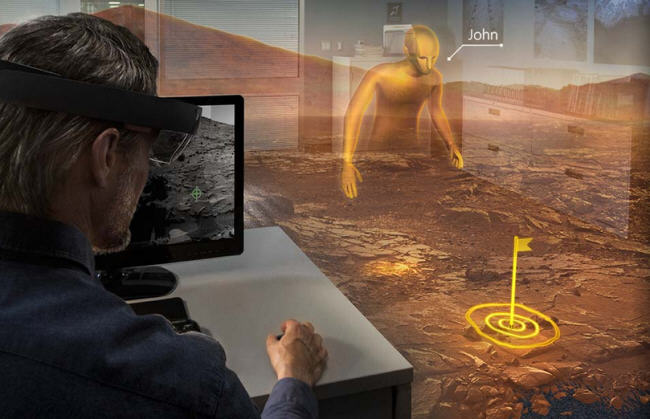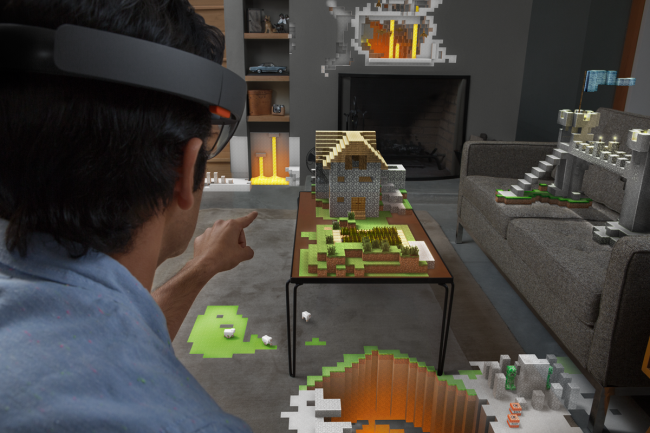Microsoft is leaner and focused and last night revealed one OS to rule them all plus two new pieces of hardware: a holographic headset called HoloLens and a new large-screen Surface Hub for collaboration.
Last night at an event in Redmond, Washington, Microsoft laid its Windows 10 vision bare: an OS that works uniformly across notebooks, desktops, phablets, smartphones and tablets, not to mention games consoles.
The company revealed how artificial intelligence in the form of digital assistant Cortana was coming to the PC and the browser (Project Spartan), it showed how touch first Office 10 apps have been optimised for working in real-time across mobile devices and PCs, and it revealed new universal apps for Photos, Videos, Music, Maps, People & Messaging and Mail & Calendar.
It also revealed how Xbox One games will be able to stream Xbox games to PCs and tablets running Windows 10.
And ultimately it revealed that Windows 10 won’t be just an operating system, it will be an entire internet service accessible anywhere and on any device.
HoloLens – a vision for the future of computing?

The Microsoft HoloLens headset
But the real wow factor, the thing that got everybody’s imaginations humming was the HoloLens, a holographic headset that is in effect the world’s first holographic computing platform.
Wearing the headset enables all Windows universal apps to work as holograms that appear before you in the real world and allows you to interact with data in a way not possible before.
Think if it as a mash-up of augmented reality and Oculus Rift, only more connected with real data and not just marketing and video games.
Intriguingly it is untethered – no wires, phones or PC connection are needed.
The headset features see-through holographic, high-definition lenses and spatial sound so users can view and hear holograms in the real world around them.
The realistic impact is made all the more physical through the use of advanced sensors, next-generation system on a chip and a new Holographic Processing unit that understands what users are doing and the world around them in 3D.
To get the ball rolling, Windows 10 includes a set of APIs that enable developers to create holographic experiences in the real world under the heading Windows Holographic.
Microsoft has promised that HoloLens will go mainstream at some point during the Windows 10 journey and it will be interesting to see how it will do in a world where tech firms are trying to change the shape of computing.

Virtual life on Mars
A novel first-use case scenario for HoloLens comes through a collaboration with US space agency NASA, whereby NASA scientists will be able to explore Mars in a more immersive way using Windows Holographic and the Mars Curiosity rover through a program called OnSight.
Internet search giant Google has pretty much canned Google Glass as a consumer play, but is staying in the AR game with MagicLeap, a company it acquired last year.
Social network Facebook has also earmarked Oculus VR, which it paid US$2bn for last year, for more than just gaming apps, looking at it as a future way for businesses to communicate, for example.

The Microsoft HoloLens at Work

The Microsoft HoloLens at home
Surface Hub
Microsoft knows it’s onto something with its Surface two-in-one tablet and PC devices and now it wants to cement its foothold in the workplace.
Last night, Microsoft revealed the Surface Hub hardware for the first time, a family of 55-inch and 84-inch large screens that make it possible for teams to collaborate.
The machines feature multi-touch and digital inking technology, built-in cameras, sensors and microphones, so people can collaborate in the same room from across continents.
Think of those gigantic videoconferencing suites such as Cisco’s TelePresence and HP’s Halo boiled down into a compact screen and you get the picture.

The Microsoft Surface Hub in a work environment
Specifically, the Surface Hub features state-of-the-art digital white boarding, instant remote conferencing, the ability for multiple people to share and edit content on the screen from a laptop, tablet or phone, and a trusted platform for large-screen apps.
You get the sense that with Windows 10 Microsoft has hit the reset button once again, only this time it means it. Microsoft is a leaner, flatter organisation, with a vision for a vast ecosystem that hinges on just one OS.
“Windows 10 marks the beginning of the more personal computing era in the mobile-first, cloud-first world,” said Satya Nadella, CEO of Microsoft.
“Our ambition is for the 1.5bn people who are using Windows today to fall in love with Windows 10 and for billions more to decide to make Windows home.”